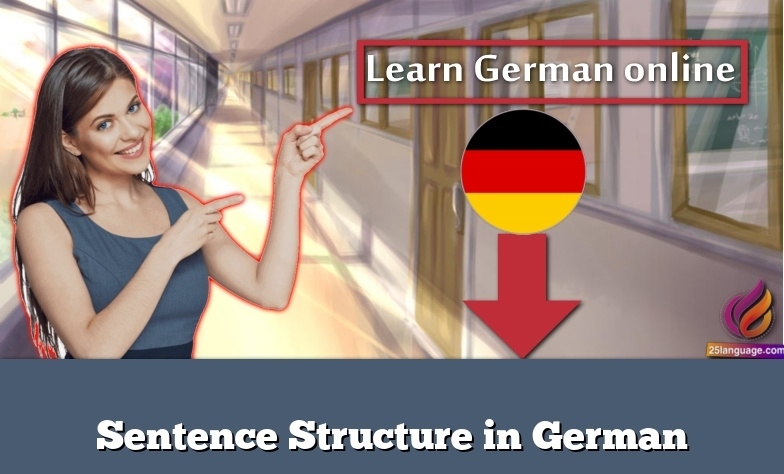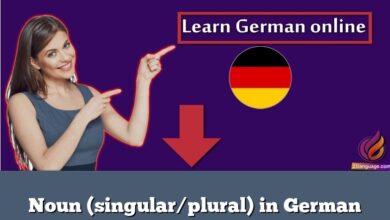Sentence Structure in German

Sentence Structure in German.Sentence structure in German can differ significantly from English due to its more flexible word order and specific grammatical rules. Here’s an overview of key aspects of German sentence structure with examples and their English translations:
1. Standard Sentence Structure (Subject-Verb-Object)
German usually follows the Subject-Verb-Object (SVO) order in simple sentences, similar to English.
| German Sentence | English Translation |
|---|---|
| Der Hund bellt. | The dog barks. |
| Ich lese ein Buch. | I am reading a book. |
2. Inverted Word Order (Verb-Subject-Object)
When a sentence begins with an adverbial phrase or anything other than the subject, the verb comes first, followed by the subject.
| German Sentence | English Translation |
|---|---|
| Heute geht Maria in die Schule. | Today, Maria goes to school. |
| Gestern sah ich einen Film. | Yesterday, I watched a movie. |
3. Separable Prefix Verbs
In sentences with separable prefix verbs, the prefix is moved to the end of the clause.
| German Sentence | English Translation |
|---|---|
| Ich stehe um sechs Uhr auf. | I get up at six o’clock. |
| Er macht das Licht aus. | He turns off the light. |
4. Subordinate Clauses
In subordinate clauses, the conjugated verb goes to the end.
| German Sentence | English Translation |
|---|---|
| Ich weiß, dass du recht hast. | I know that you are right. |
| Sie sagte, dass sie müde sei. | She said that she was tired. |
5. Modal Verbs and Complements
With modal verbs, the main verb is in the infinitive form at the end of the sentence.
| German Sentence | English Translation |
|---|---|
| Ich möchte ein Eis essen. | I would like to eat an ice cream. |
| Du solltest früher schlafen. | You should sleep earlier. |
6. Questions
For questions, the verb usually comes first, followed by the subject.
| German Sentence | English Translation |
|---|---|
| Bist du müde? | Are you tired? |
| Wann kommst du an? | When do you arrive? |
Understanding these structures is essential for constructing grammatically correct sentences in German and comprehending written and spoken German effectively.
Examples




























